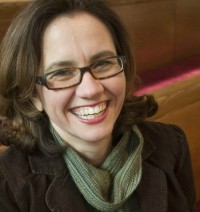Architecture of thought
In the past we have had a sort of architecture to our religious thought in the United States.
We have the foundation, which has been books and publishing. I’m reading Matt Hedstrom’s The Rise of Liberal Religion which explains the thorough endeavor to cultivate book culture and teach the American middle class how to read.
We have the structural integrity, which would be our educational institutions. Seminaries allowed us to build on the foundation of books when professors taught students. They highlighted certain material and taught them the history of thought and events. Students learned how to interpret the Scripture and wrestle with theological ideas.
Then there was the interior of the home. The largest communal room was the church sanctuary, where we learned to articulate the theology, history, and culture through the lens of the Scripture. The side rooms were Sunday school classrooms, Bible studies and confirmation. There were also important magazines, like the Century.
I like to think that with all of it, we were also swinging on the porch, staying engaged with the social justice issues.
Things changed with the radio. But for historically progressive denominations, we listened to the Protestant Hour which highlighted sermons, so it didn’t have too much of an affect on our structure of thought. Television moved in, and had a bit more of an impact (although the denominational churches largely ignored it). Now there’s the Internet, which has opened up all kinds of conversations and friendships across lines we rarely transgressed. I love what is happening. Since I have moved frequently throughout my career, my most important intellectual mentors and friends are people with whom I engage on social media. But I wonder what the Internet and other factors are doing to our architecture of thought.
Books. I learn about books through blogs, Twitter and Facebook. Our brick and mortar stores are closing. Our denominational body no longer has a resource room. I don’t have access to our denominational publishing catalog. I get to magazines through social media. I read the NYT and the Chattanooga paper, but for the most part, I get to newspaper articles through social media. In other words, I only know about new books if their authors interact with social media.
Seminaries. Seminaries are for professors training students. But if we take an honest look at what’s happening at many of our seminaries, we can see that enrollment is going way down along with tenured positions. The tenured positions we do have are largely populated with white men who are at retirement age.
What are we doing instead? In many institutions, we have increased efforts into building up the endowment and bolstering the mid-level management. I shake my head at some seminaries, where there seems to be one VP for every five graduates. A small seminary classroom can be brutal, because one verbose student (especially of the preacherly type) can completely dominate and shut out everyone else.
The Board is made up of money people—which usually means that they’re not pastors and they don’t know much about the small churches we serve. They don’t understand the curriculum or professors we need. They know that we need more money. They may be good-hearted and loving, but building the endowment is their job. The problem is that all of this can eat away at the structural integrity of our architecture of thought.
Churches. Churches are learning to experiment with different ways to educate. Some people are working with sermons so that they are not one-way monologues, but dialogues. Or they work to integrate different media into their sermons. Other people are using an Academy model instead of a Sunday school.
I could go on, but let me get to the point. Our intellectual architecture is being dismantled. But it is also being reassembled. I use the “architecture” metaphor, because what we are creating will be in place for many decades to come. Some of what is happening, we don’t have any control over. Yet we can be strategic about a lot of it. Are we remembering the important purpose of our thought? Are we creating structures that will allow us flexibility, diversity and sustainability? Are we building foundations, bones, rooms and porches that will be engaging and enlightening?





